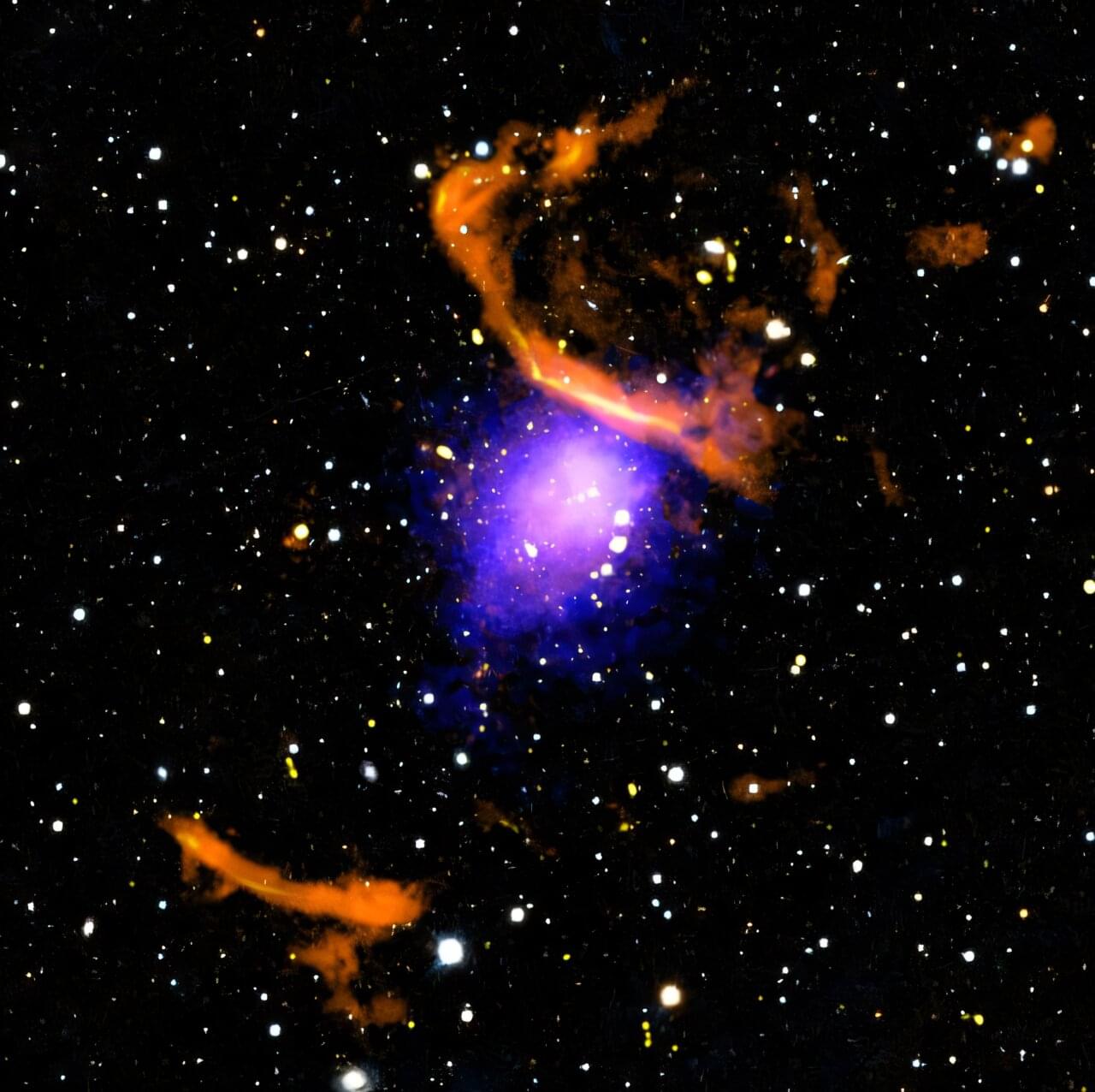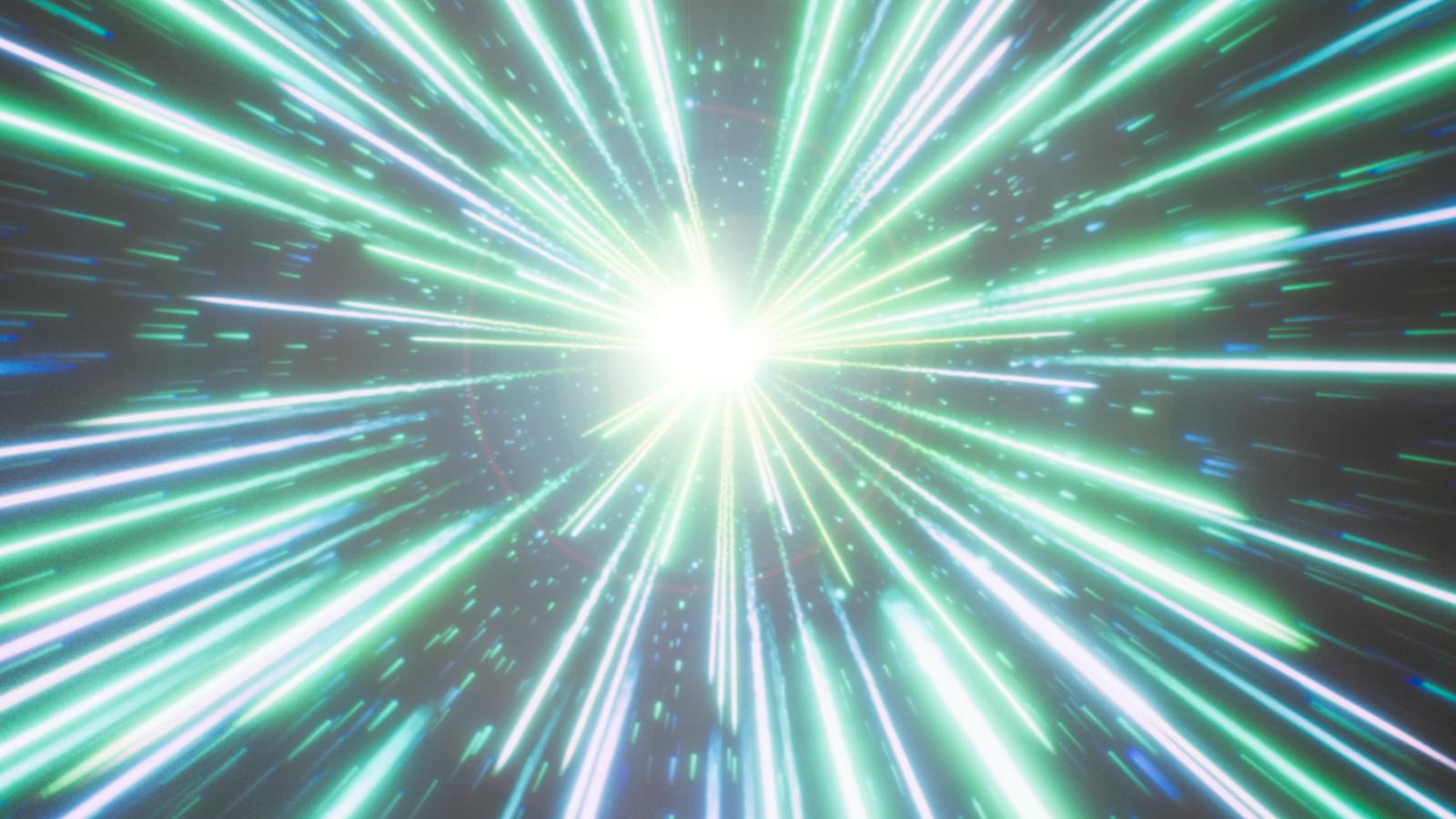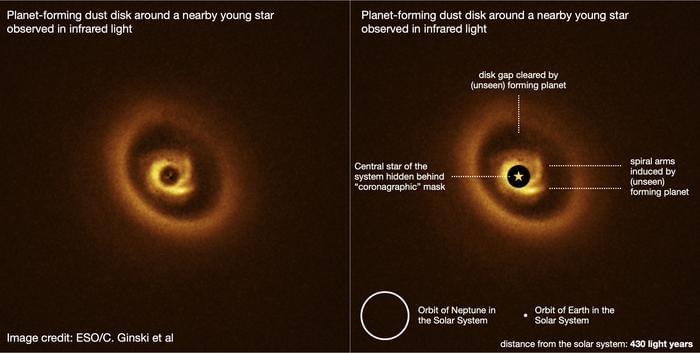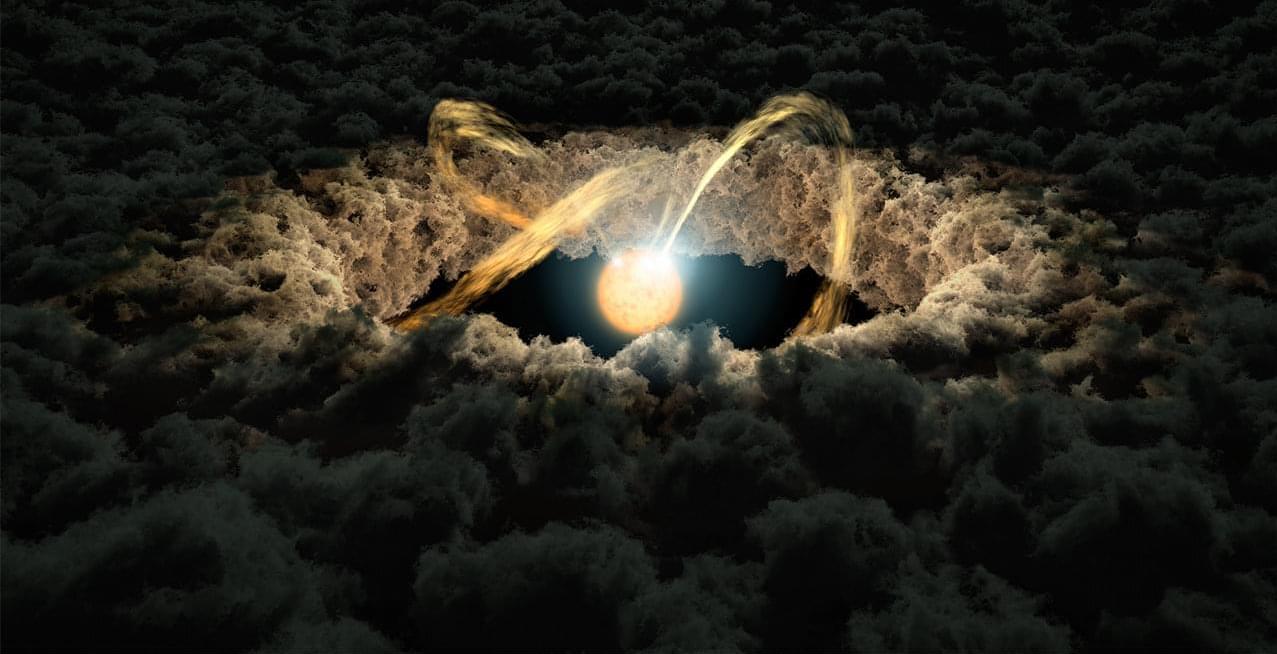The harsh interstellar environment ought to destroy these carbon-rich molecules; experiments reveal their secret weapon.
Organic molecules called polycyclic aromatic hydrocarbons (PAHs) populate interstellar space and represent a major reservoir of carbon, an essential element for life. The smallest of these molecules mysteriously survive the harsh environment of space, and a research team has now explained how they do it [1]. In experiments in space-like conditions, the team showed that the molecules can use a process called recurrent fluorescence to shed some of the potentially destructive vibrational energy they receive from ultraviolet photons and molecular collisions. The results will help theorists model the dissemination of the building blocks of life throughout the cosmos.
PAHs form in dying stars and get ejected via supernovae into the interstellar medium. In 2021 they were detected in cold interstellar clouds (molecular clouds), and the JWST observatory has since confirmed widespread evidence for small PAHs at higher abundance than models predict. Small PAHs somehow survive ultraviolet radiation, molecular collisions, and other processes that trigger internal vibrations that can tear them apart.









